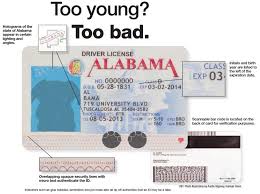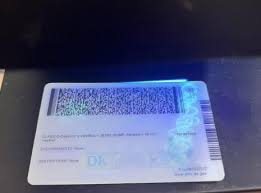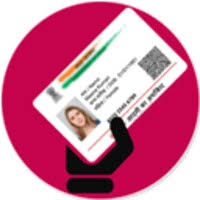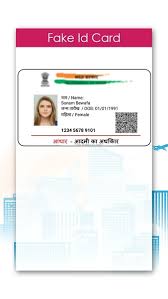How do bouncers spot fake IDs?
How Do Bouncers Spot Fake IDs? A Detailed Guide
In today's world, where age restrictions govern various activities like entering bars or clubs, purchasing alcohol, or even buying tobacco, the use of fake IDs has become a common issue. Many underage individuals attempt to use fake IDs to bypass these restrictions. So, how do bouncers spot fake IDs? This comprehensive guide will walk you through the techniques and methods used by trained bouncers to detect forged identification cards.

What is a Fake ID?
Before diving into how bouncers spot fake IDs, it’s essential to understand what a fake ID is. A fake ID is any identification card that has been altered, forged, or completely fabricated to misrepresent someone’s age or identity. These IDs are often used to access restricted venues like clubs or to purchase age-restricted products like alcohol and tobacco.
Common Techniques Bouncers Use to Spot Fake IDs
Bouncers are highly trained to identify various types of fake IDs. They follow specific procedures and are equipped with the knowledge to detect even the most sophisticated forgeries. Here are some of the common techniques they use:
1. Visual Inspection of the ID
One of the first things bouncers do when handed an ID is visually inspect it. They look for any obvious signs of tampering, such as:
- Misspelled Words: Fake IDs often have spelling errors, especially if they are poorly made.
- Blurry Images or Text: If the text or photo on the ID is unclear, it may indicate that the ID was copied or poorly printed.
- Holograms and Watermarks: Real IDs often have holograms and watermarks that are difficult to replicate. Bouncers are trained to spot the difference between real and fake holographic elements.
2. Checking the Material and Feel of the ID
Bouncers also rely on their sense of touch to detect fake IDs. Real IDs are made from specific materials that are hard to replicate. A fake ID may feel too thin, too thick, or not have the right texture. Moreover, some fake IDs may have a glossy finish that is not present on legitimate identification cards.
3. Comparing Facial Features
A bouncer will compare the person presenting the ID with the photo on the card. They pay close attention to facial features such as:
- Eye Color: Even slight differences in eye color can give away a fake ID.
- Facial Structure: The shape of the nose, chin, and jawline should match.
- Hair and Skin Tone: If the person's appearance has changed significantly, bouncers may ask for secondary identification to verify the authenticity of the ID.
4. Use of UV Lights and Scanners
Many establishments equip their bouncers with UV lights and ID scanners. Under ultraviolet light, legitimate IDs will reveal hidden patterns or symbols that are nearly impossible to forge. An ID scanner, on the other hand, can instantly verify whether the information on the card matches the official database.
5. Asking Specific Questions
To further verify the legitimacy of an ID, a bouncer may ask the cardholder specific questions about the details on the ID. These questions may include:
- What is your date of birth?
- What is your zodiac sign?
- What is your address?
These seemingly simple questions can trip up someone using a fake ID, as they may not remember the false information on the card.
Types of Fake IDs Bouncers Encounter
Bouncers come across different types of fake IDs, and they are trained to spot even the most convincing ones. Some common types of fake IDs include:
1. Altered Real IDs
These are real identification cards that have been tampered with, typically by changing the birth date or photo. Bouncers are trained to detect inconsistencies in fonts, alignment, or color.
2. Completely Fabricated IDs
These are IDs that are entirely fake, often created using a template. The lack of official security features, such as holograms or barcodes, makes them relatively easy to spot for a trained bouncer.
3. Borrowed or Stolen IDs
Sometimes, individuals will borrow or steal a real ID from someone who looks like them. While these IDs are legitimate, bouncers can often tell when the person presenting the ID doesn't match the photo, even if the resemblance is close.
Long-Term Experience: How Bouncers Improve Over Time
The longer a bouncer works in the industry, the better they become at spotting fake IDs. They learn the subtle differences between real and fake IDs, and they become adept at reading body language. Nervous behavior or hesitations can alert a bouncer to potential foul play, prompting them to scrutinize the ID more carefully.
What Happens If You’re Caught with a Fake ID?
If a bouncer catches someone using a fake ID, the consequences can be severe. Most establishments have strict policies, and the individual using the fake ID could face:
- Confiscation of the ID: The fake ID is usually taken and handed over to authorities.
- Banning from the Venue: The individual may be permanently banned from the establishment.
- Legal Consequences: Depending on the local laws, using a fake ID can result in fines, community service, or even jail time.
Conclusion: How Do Bouncers Spot Fake IDs?
In summary, bouncers use a combination of visual inspection, tactile checks, technology, and experience to spot fake IDs. They are trained to identify various types of forgeries and to question the cardholder to ensure the ID is legitimate. While fake IDs may seem like an easy way to bypass age restrictions, bouncers are well-prepared to catch those trying to deceive the system.
Related Keywords:
- Fake ID detection
- How bouncers identify fake IDs
- Spotting fake identification cards
- Techniques for identifying forged IDs
- Fake ID penalties
- Real vs fake ID differences
By understanding how bouncers spot fake IDs, you can better appreciate the measures in place to ensure that age-restricted venues remain safe and compliant with the law.
 scannable Fake Texas DL
scannable Fake Texas DL
 scannable Fake Washington DL
scannable Fake Washington DL
 scannable Fake Virginia DL
scannable Fake Virginia DL
 scannable Fake Utah DL
scannable Fake Utah DL